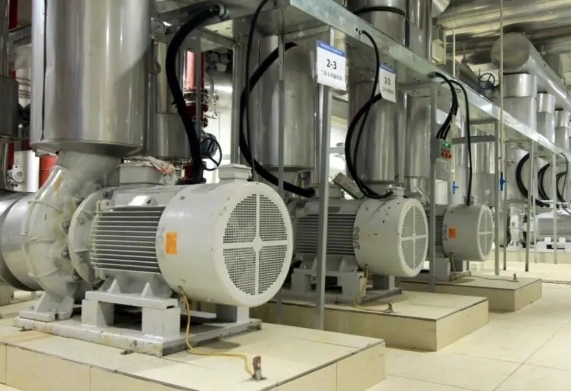Motor overload failure means that the motor is operating with a current that exceeds its design rating, resulting in the motor overheating, being damaged or stopping working. The following are some characteristics of motor overload faults and possible causes analyzed:
Characteristics:
1. Overheating: The surface temperature of the motor is abnormally high and may even have a burning odor.
2. Excessive current: the current exceeds the rated current when the motor is running.
3. Reduced speed: The motor speed is reduced and may stop in severe cases.
4. Sound and vibration: low sound and vibration when the motor is running.
5. Burnt odor and black smoke: In case of severe overload, a burnt odor or even black smoke may permeate around the motor.
6. winding damage: the insulation part of the winding is black and brittle, and in serious cases, the insulation layer is carbonized into powder.

Cause analysis:
1. overload: the actual running power of the motor exceeds the rated power, resulting in overload.
2. phase missing operation: one or more phases of the motor’s three-phase power supply is missing, resulting in unbalanced motor operation.
3. Voltage problem: the running voltage exceeds the rated voltage allowable value, resulting in motor winding heat.
4. Mechanical failure: such as bearing damage or mechanical jamming, resulting in motor speed drop or stagnation.
5. Misoperation during the test: such as the blocking test time is too long, or the capacity of the test equipment is insufficient, resulting in overheating of the motor winding.
6. Wiring error: connect the motor with star connection wrongly according to triangle connection, or test the motor with different frequency and voltage at too high voltage.
7. Power supply problem: the power supply voltage is too high or too low, resulting in winding heat.
8. Impact load: the load is suddenly increased, resulting in a sudden decrease in motor speed.
9. Bearing system failure: bearing damage or sweeping stop, resulting in motor overload.
Fault troubleshooting methods:
1. Check the load: Make sure the motor is properly selected and matched to the load.
2. Measure current: Use an ammeter or clamp meter to measure the actual power consumption of the motor and compare it to the rating on the nameplate.
3. Check Protective Devices: Verify that motor starter protective devices are properly installed and adjusted.
4. Clean Vents: Periodically clean motor surfaces and vents to remove debris that impedes airflow.
5. Check motor wiring: Make sure the motor is properly wired and there are no wiring errors.
6. Check the power supply: Make sure the power supply voltage is stable and within the allowable range.
Through the above characteristics and cause analysis, motor overload faults can be effectively identified and dealt with to ensure the safe and stable operation of the motor.
Post time: Jul-17-2024

